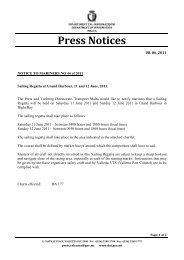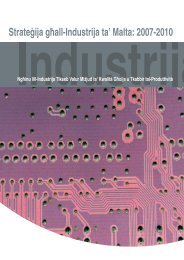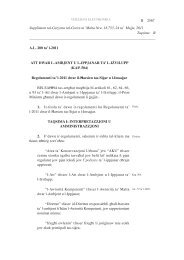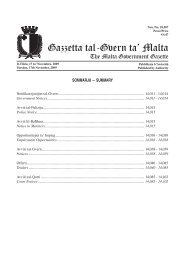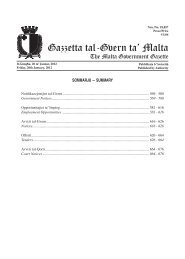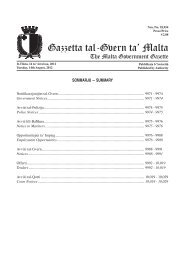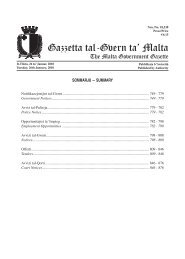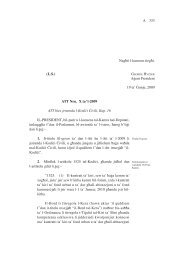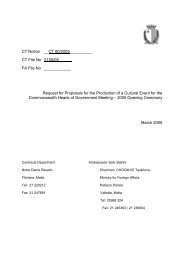You also want an ePaper? Increase the reach of your titles
YUMPU automatically turns print PDFs into web optimized ePapers that Google loves.
Malta fl-Ewropa<br />
As from the 1 January 2008, Malta became part of the euro zone, and the euro became Malta’s national currency.<br />
The notes are all the same for all countries having the euro as their currency, and each note has a different colour.<br />
On the other hand the coins have one side which is common for all countries, while the other face features the<br />
respective country’s national symbols. The design of this face differs from one country to the other.<br />
Malta underwent a consultation process, where the people were asked to choose designs representing Maltato<br />
feature on the euro coin. Malta’s euros display three separate designs, one featuring the altar at Mnajdra temples<br />
which is featured on the 0.01, 0.02 and 0.05 coins, another one displaying Malta’s National Emblem on the 0.10,<br />
0.20 and 0.50 coins, and another design with the Maltese Cross which can be seen on the 1.00 and 2.00. The<br />
selection for Malta’s euro design was finalised by means of a public consultation, in two stages. In the first stage<br />
of this public consultation, the Maltese public had the opportunity to participate in the process of choosing from<br />
a total of twelve selections, categorised in 4 themes – Malta’s prehistory, Malta’s renaissance, Malta’s identity and<br />
Malta’s archipelago. Each theme had three different selections to choose from.<br />
The four final designs were sent to designer Noel Galea Bason. Mr Galea Bason structured the coins with these<br />
designs, so the public would vote on the best three, and eventually Malta’s coins would be ready. In the second<br />
stage, the public was asked to vote one more time. In this phase, Malta’s cross, Malta’s emblem and Imnajdra’s<br />
altar were declared as the public’s preferred choice.<br />
The Central Bank of Malta issued the final designs on 19 February 2007 and on the 23 October of the same year<br />
the designs were published in the European Union’s official journal.<br />
This is the European flag. It’s<br />
the European Union’s symbol,<br />
as well as a representation of<br />
unity and Europe’s identity<br />
in a wider aspect. The circle<br />
with golden stars represents<br />
solidarity and harmony<br />
among Europe’s nations.<br />
The number of stars does<br />
not reflect the number of<br />
Member States. There are<br />
12 stars because the number<br />
12 is a traditional symbol<br />
of perfection, wealth and<br />
unity. To this effect the<br />
flag was never changed<br />
with the European Union’s<br />
enlargement.<br />
13




